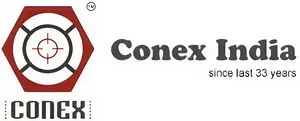Bronze Tank Connectors
Bronze Tank Connectors
Bronze tank connectors are pipe fittings designed to provide a connection between a pipe and a tank, vessel, or container. These connectors are commonly used in various applications, such as plumbing, industrial processes, and marine systems, where a secure and leak-resistant connection is needed to transfer fluids into or out of a tank.
Here are key points to understand about Bronze tank connectors:
- Design and Configuration:Bronze tank connectors typically consist of a male threaded end that connects to a pipe and a flanged or threaded end that connects to the tank or vessel. The flanged end often features a gasket or sealing material to create a watertight seal between the connector and the tank.
- Material Composition:Bronze tank connectors are made from Bronze alloys, which primarily consist of copper and tin. The specific alloy chosen depends on factors such as corrosion resistance, fluid compatibility, and environmental conditions.
- Corrosion Resistance:Bronze offers good corrosion resistance, making it suitable for applications that involve water, certain chemicals, and marine environments.
- Flanged vs. Threaded End:Bronze tank connectors may come with either a flanged or threaded end for connection to the tank. Flanged ends typically require bolting to the tank, while threaded ends allow for a screw-on connection.
- Applications:Bronze tank connectors are used in a variety of applications, including connecting pipes to tanks for water storage, fluid transport, fuel storage, chemical processing, and marine systems.
- Pressure and Temperature Ratings:The pressure and temperature ratings of Bronze tank connectors depend on the material, design, size, and intended use. It’s important to choose connectors that are suitable for the specific working conditions.
- Gaskets and Seals:Depending on the design, Bronze tank connectors may include gaskets, seals, or other sealing materials to create a reliable connection between the connector and the tank.
When using Bronze tank connectors, consider factors such as the material, connection type (flanged or threaded), compatibility with other materials, and the specific requirements of the tank and application.





